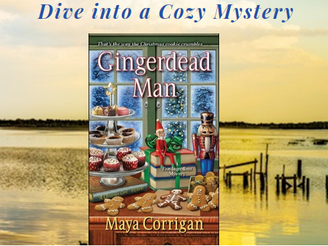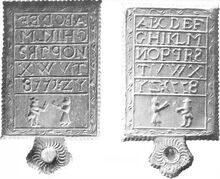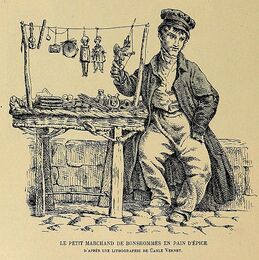Gingerbread: A Short History
|
When I was writing Gingerdead Man, the 7th Five-Ingredient Mystery, I researched the history of gingerbread. It turned out to be a more sinister history than I imagined.
The term gingerbread derives from the Old French gigembras for gingered food. Marco Polo brought ginger to the West from China in the 13th century. Initially rare and expensive, the spice became widely available and cheap over time. |
|
Religious orders were the first to gain access to the spice. Monks made a paste of breadcrumbs, honey, and ginger and rolled it out thin to feed the hungry and give religious instruction. They pressed it into molds carved with images of saints or biblical scenes before baking.
Children learned the alphabet from a gingerbread slab with letters inscribed on it. Once children learned a letter from the slab, they were allowed to eat that letter. |
|
Queen Elizabeth I hired her own gingerbread baker to feed her craving for the sweet. She ordered the baker to make gingerbread men that resembled visiting dignitaries and used them as party favors for state events.
The common people bought the sweet at gingerbread fairs and believed certain shapes were charmed. Gingerbread rabbits were supposed to increase fertility. Young unmarried women ate man-shaped gingerbread figures called “husbands” in hopes of attracting a live husband. Superstitions about gingerbread flourished in the 17th century. Witches supposedly made gingerbread figures, ate them, and thereby caused the death of their enemies. Dutch magistrates went so far as to declare baking or eating molded cookies illegal. |
|
But gingered figures were rescued from disrepute in the 19th century. Gingerbread men became holiday icons after Queen Victoria popularized the German tradition from her husband’s homeland of evergreen trees hung with sweets. Nearly two centuries later, we still hang iced and decorated gingerbread men on Christmas trees and put them on our cookie platters.
The association of gingerbread men and death persists in a Halloween treat known as a gingerdead man, which has skeleton bones traced in white icing. This version of the sweet is central to my seventh Five-Ingredient Mystery, Gingerdead Man, which takes place during a Dickens of a Holiday festival. |
Read more about the dark history of gingerbread at CrimeReads.
Find out where to buy Gingerdead Man and read the first chapter.
Find out where to buy Gingerdead Man and read the first chapter.




